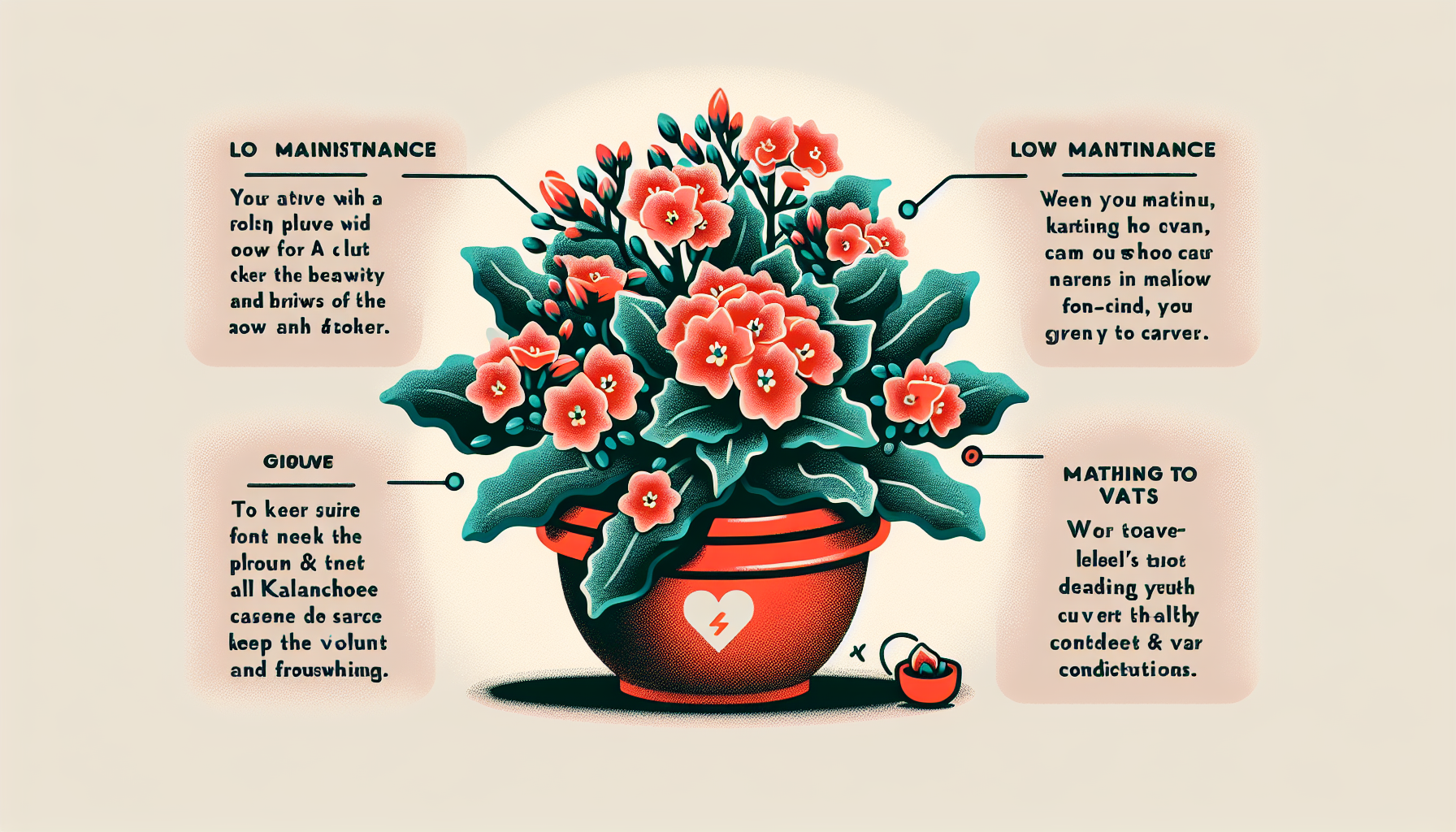
how to care for a kalanchoe plant
How to Care for a Kalanchoe Plant
Kalanchoe plants are a popular choice for indoor gardeners due to their vibrant flowers, low-maintenance nature, and ability to thrive in various conditions. Whether you're a seasoned plant enthusiast or a beginner, this guide will help you keep your kalanchoe healthy and flourishing.
Light Requirements
Kalanchoe plants prefer bright, indirect sunlight. Place your plant near a window that receives plenty of light but avoid direct midday sun, which can scorch its leaves. If growing indoors, a south-facing or east-facing window is ideal. During the winter months, you might need to supplement with a grow light to maintain healthy growth.
Watering
One of the key aspects of caring for a kalanchoe is proper watering. These plants are succulents, meaning they store water in their leaves and don’t require frequent watering. Allow the soil to dry completely between waterings to prevent root rot. Typically, watering once every two weeks is sufficient, but this may vary based on your climate and the potting mix.
Soil and Potting
Kalanchoe plants thrive in well-draining soil. A cactus or succulent potting mix works perfectly. If you're using regular potting soil, consider mixing in sand or perlite to improve drainage. Make sure the pot has drainage holes to allow excess water to escape, as kalanchoes don’t like sitting in soggy soil.
Temperature and Humidity
Kalanchoe plants prefer warm temperatures ranging from 60°F to 85°F (15°C to 29°C). They don’t tolerate frost, so if you’re growing your plant outdoors, bring it inside when the temperature drops. These plants thrive in average household humidity levels, making them great for indoor environments.
Fertilizing
Fertilize your kalanchoe plant during its growing season (spring and summer) to encourage healthy growth and vibrant blooms. Use a balanced liquid fertilizer diluted to half strength once a month. Avoid over-fertilizing, as this can lead to excessive foliage growth and fewer flowers.
Pruning
Pruning is an important part of kalanchoe care. After the plant finishes blooming, remove any spent flowers to encourage new growth. You can also trim leggy stems to maintain a compact and attractive shape. Use clean, sharp scissors or pruning shears to avoid damaging the plant.
Propagation
Kalanchoes are easy to propagate, making them a favorite for gardeners looking to expand their plant collection. The most common method is through leaf or stem cuttings. Simply cut a healthy stem or leaf, let it dry for a day or two, and plant it in well-draining soil. Keep the soil lightly moist until roots develop.
Common Problems and Solutions
While kalanchoes are hardy plants, they can occasionally face issues. Here are some common problems and how to solve them:
- Yellow Leaves: This is often a sign of overwatering. Allow the soil to dry out completely before watering again.
- Leggy Growth: If your plant looks stretched out, it’s likely not getting enough light. Move it to a brighter location.
- Pests: Kalanchoes can attract pests like aphids or mealybugs. Treat infestations with insecticidal soap or neem oil.
Conclusion
Caring for a kalanchoe plant is simple and rewarding. By providing the right amount of light, water, and nutrients, you can enjoy its vibrant blooms year-round. With proper care, your kalanchoe will be a beautiful addition to your home or garden.
For more tips on caring for houseplants, visit our Gardening Tips page!